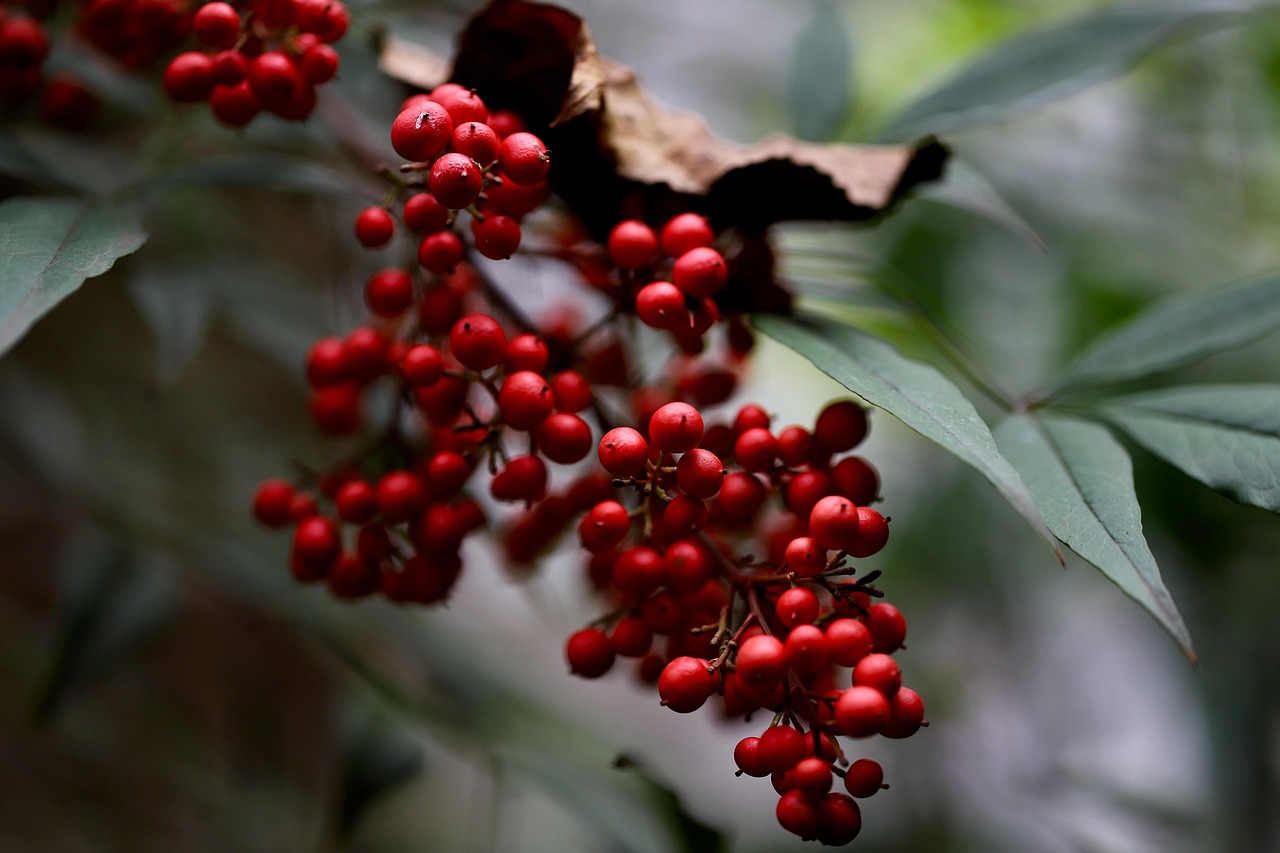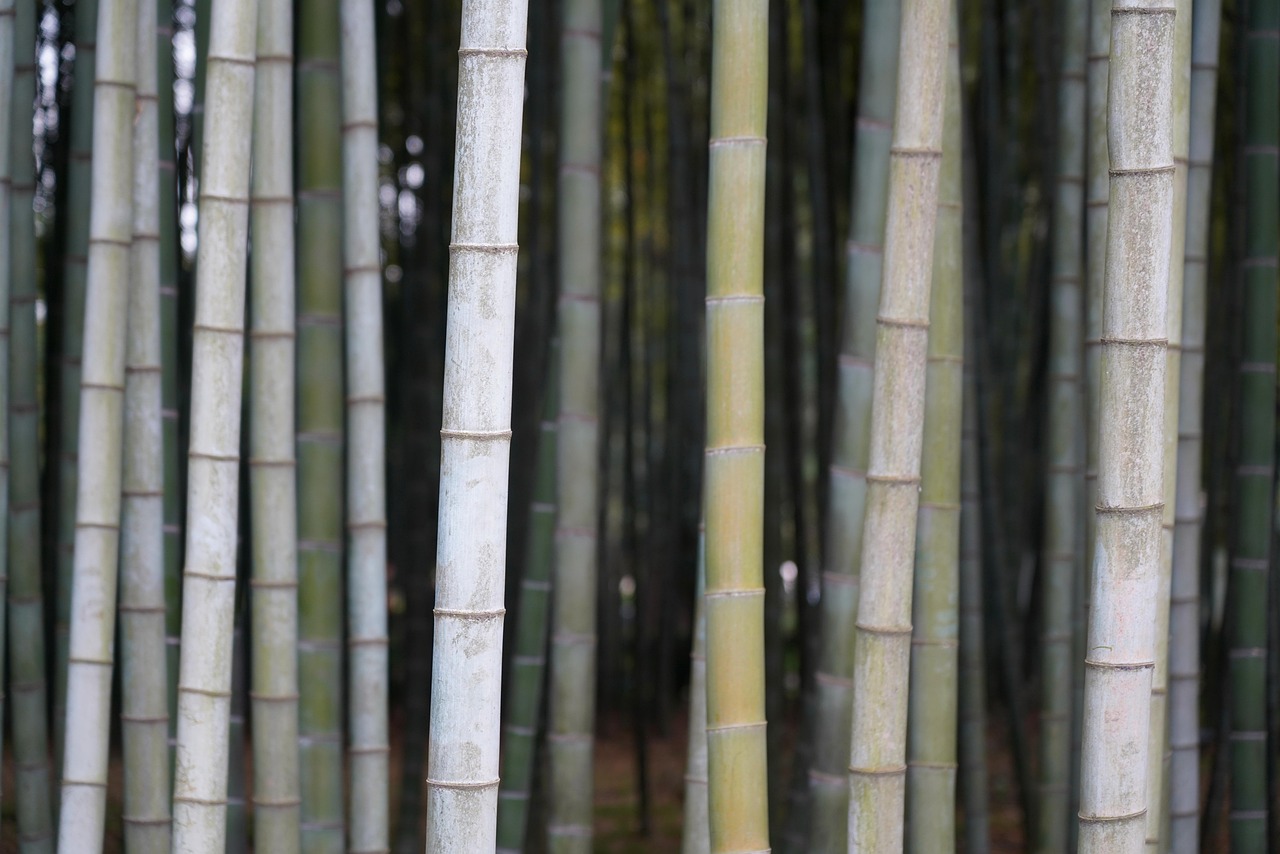Pruning bamboo is essential for maintaining its health and aesthetics in artistic landscaping. Proper techniques enhance growth, control size, and promote lush foliage, allowing bamboo to thrive as an attractive element in garden designs.
Bamboo is a versatile plant widely appreciated in landscaping for its unique appearance and rapid growth. Originating from Asia, it has become popular in various parts of the world, thanks to its ability to create natural privacy screens, windbreaks, and even architectural accents. The beauty of bamboo lies not only in its height and structure but also in its capacity to blend seamlessly with other plants and elements in a landscape design.

However, without proper care and maintenance, bamboo can become unruly. It can spread aggressively if left unchecked, which may lead to overcrowding and competition for nutrients among plants. Pruning is a vital practice that helps manage bamboo’s growth while enhancing its visual appeal. Understanding the right times and methods to prune bamboo can significantly affect its health and the overall look of your landscaping project.
Understanding Bamboo Growth
Bamboo belongs to the grass family and grows through a unique system called rhizomes. These underground stems spread out horizontally, producing new shoots that emerge above ground. The growth pattern can vary based on the species, but there are general characteristics that all bamboo shares:
- Fast Growth: Some species can grow several feet in just one growing season.
- Height Variation: Bamboo can range from small varieties under two feet to towering species reaching over 100 feet.
- Seasonal Growth: Most bamboo grows actively in spring and summer, with slower growth in the fall and winter.
With this understanding, one can appreciate the importance of timing when it comes to pruning. Correctly assessing the growth cycle will allow for more effective pruning practices that can enhance both the health and appearance of bamboo.

When to Prune Bamboo
Timing is critical for successful bamboo pruning. The best time to prune is generally during the late winter or early spring before the new growth begins. This timing allows you to shape the plant while minimizing stress on it. Here are some key points to consider regarding pruning timing:
- Late Winter/Early Spring: This is the ideal period for most bamboo species, allowing for rejuvenation before new shoots emerge.
- After Growth Season: Light pruning may also be done after the growing season ends in fall.
- Avoid During Dormancy: Pruning during dormancy can harm the plant as it is not actively growing.
By adhering to these guidelines, you can ensure that your bamboo will grow back stronger and more vibrant after pruning.
How to Prune Bamboo
The actual process of pruning bamboo can seem daunting, but with the right tools and techniques, it becomes manageable. Follow these steps for effective pruning:

- Gather Tools: Use sharp pruners or loppers for clean cuts. Gloves are also recommended for protection.
- Identify Dead or Damaged Canes: Start by removing any dead, dying, or damaged canes at their base.
- Selectively Thin Canes: For dense clumps, selectively remove some healthy canes to improve air circulation and light penetration.
- Cutting Height: Cut canes at an angle just above a node to encourage new growth while minimizing water accumulation.
Pruning not only shapes the appearance of bamboo but also promotes healthy growth by allowing more light and air to reach the inner canes.
The Benefits of Pruning Bamboo
Pruning offers several benefits that contribute to the overall health and aesthetic appeal of your bamboo plants. Some of these benefits include:
- Improved Air Circulation: Reducing density allows better airflow, which helps prevent pests and diseases.
- Enhanced Aesthetics: Regular pruning maintains a tidy appearance and encourages desirable growth patterns.
- Control Size: Pruning helps keep bamboo within desired dimensions, preventing it from taking over your garden space.
By understanding these benefits, you can appreciate how regular pruning contributes not just to the health of the bamboo itself but also enhances your overall landscaping efforts.

Incorporating bamboo into your landscape requires thoughtful consideration of its growth habits and maintenance practices. With proper pruning techniques and timing, you can create an artistic landscape that showcases the beauty of bamboo while keeping it healthy and manageable.
Choosing the Right Bamboo Species
When planning your bamboo landscape, selecting the right species is crucial for achieving your desired aesthetic and functional goals. There are over 1,400 species of bamboo, each with unique characteristics. Some are better suited for specific climates, while others may be more appropriate for particular landscape designs.
Here are some popular bamboo species commonly used in landscaping:
| Bamboo Species | Height (Feet) | Growth Habit | Climate Preference |
|---|---|---|---|
| Phyllostachys aurea (Golden Bamboo) | 6-12 | Clumping | Temperate |
| Fargesia murielae (Umbrella Bamboo) | 4-8 | Clumping | Cooled Areas |
| Phyllostachys nigra (Black Bamboo) | 30-40 | Running | Tropical/Temperate |
| Dendrocalamus giganteus (Giant Bamboo) | 50-100 | Clumping | Tropical |
When selecting a species, consider the following factors:
- Height: Choose a height that fits your landscape design and space limitations.
- Growth Habit: Clumping bamboos are more contained than running types, which spread aggressively.
- Climate Compatibility: Ensure the bamboo species is suitable for your region’s climate conditions.
Preparing Your Landscape for Bamboo
Before planting bamboo, it is essential to prepare your landscape properly. Here are the steps to take:
- Select Location: Choose a spot that provides adequate sunlight. Most bamboo species thrive in full sun but can tolerate partial shade.
- Soil Testing: Conduct a soil test to determine pH and nutrient levels. Bamboo prefers well-drained, fertile soil.
- Remove Weeds and Debris: Clear the area of weeds and debris to reduce competition for nutrients.
- Amend Soil: Based on your soil test results, amend the soil with organic matter or fertilizers as needed.
Following these steps will create an optimal environment for your bamboo to thrive. Healthy plants are easier to maintain and require less pruning over time.
Pruning Techniques for Different Bamboo Types
Understanding the specific pruning techniques for different types of bamboo can help you maintain their health and appearance effectively. Here are some guidelines based on growth habits:
Clumping Bamboo
Clumping bamboo grows in tight clusters, making it easier to manage. The following techniques are recommended:
- Selective Thinning: Remove older canes that are over three years old to encourage new growth.
- Maintain Shape: Trim back overgrown canes to maintain the desired height and shape.
- Avoid Heavy Pruning: Limit pruning to no more than one-third of the plant at a time to prevent stress.
Running Bamboo
The aggressive nature of running bamboo requires more frequent maintenance. Consider these techniques:
- Cane Removal: Regularly remove excess canes at their base to control spreading.
- Bamboo Barriers: Install physical barriers to limit rhizome spread into unwanted areas.
- Regular Shaping: Shape the plant periodically to prevent overcrowding and enhance aesthetics.
Pest and Disease Management in Bamboo
Your bamboo plants may face various pests and diseases that can affect their health and appearance. Being proactive in managing these issues is essential for successful bamboo landscaping. Here are some common pests and diseases to watch for:
- Aphids: These small insects can cause leaf curling and stunted growth. Control them using insecticidal soap.
- Bamboo Mites: Mites can lead to leaf discoloration. Regularly inspect your plants and treat as needed.
- Bacterial Blight: This disease can cause leaf spots and dieback. Ensure good air circulation and avoid overhead watering to minimize risk.
If you encounter issues, early detection and treatment are key. Regular inspections of your bamboo will help you identify potential problems before they escalate.
Caring for bamboo involves understanding its specific needs and potential challenges. With proper species selection, landscape preparation, pruning techniques, and pest management, your bamboo can flourish beautifully in your artistic landscaping project.
Designing with Bamboo in Landscaping
Bamboo is not only functional but also adds an artistic element to landscaping. Its unique texture, height, and movement make it an excellent choice for various design themes. When integrated thoughtfully, bamboo can enhance the visual appeal of your outdoor spaces. Here are some design ideas and considerations for using bamboo in your landscape.
Creating Privacy Screens
Bamboo is an ideal plant for creating privacy screens due to its dense growth and tall stature. Here are some tips for using bamboo as a privacy barrier:
- Select the Right Species: Choose fast-growing varieties like Phyllostachys aurea or Fargesia murielae for quick coverage.
- Spacing: Plant bamboo closer together to form a dense screen, typically 3-5 feet apart, depending on the species.
- Height Control: Regular pruning will help maintain the desired height for your privacy screen.
Using Bamboo as Focal Points
Bamboo can serve as striking focal points in a garden. Here are ways to incorporate bamboo into your design:
- Specimen Plants: Use tall, striking bamboo species as standalone features in garden beds or near water features.
- Group Plantings: Cluster several bamboo plants together for a dramatic visual impact.
- Layering: Combine bamboo with lower-growing plants to create depth and interest in your landscape.
Integrating Bamboo with Other Plants
Bamboo works well with a variety of plants, making it a versatile addition to any garden. Consider these combinations for a harmonious landscape:
Companion Planting
Pairing bamboo with the right companion plants can enhance both its beauty and functionality. Here are some suggestions:
- Ornamental Grasses: Grasses complement bamboo’s vertical lines and provide contrasting textures.
- Flowering Perennials: Use flowering plants for color contrast against the green backdrop of bamboo.
- Tropical Plants: Combine bamboo with other tropical plants for a lush, exotic feel.
Ground Cover Considerations
To prevent weeds and enhance aesthetics, consider planting ground covers around your bamboo. Some suitable options include:
- Creeping Thyme: A fragrant ground cover that can tolerate foot traffic and thrives in sunny areas.
- Pachysandra: A shade-tolerant ground cover that works well in settings where bamboo is planted in partial shade.
- Ajuga (Bugleweed): A low-growing plant with colorful foliage that can provide contrast to taller bamboo canes.
The Role of Bamboo in Sustainable Landscaping
Bamboo is not only aesthetically pleasing but also an eco-friendly choice for landscaping. Its sustainable qualities make it a popular option for environmentally conscious gardeners. Here are some benefits of using bamboo in sustainable landscaping:
- Rapid Growth: Bamboo grows quickly, making it an efficient choice for erosion control and soil stabilization.
- Carbon Sequestration: As a grass, bamboo absorbs carbon dioxide at a higher rate than many tree species, contributing to climate change mitigation.
- Low Maintenance: Once established, bamboo requires minimal upkeep compared to other plants, saving resources like water and fertilizers.
Seasonal Considerations for Bamboo Care
Bamboo requires specific care throughout the seasons to ensure its health and beauty. Understanding seasonal needs will help you maintain its vigor effectively.
Spring Care
As new growth begins in spring, consider the following care practices:
- Pruning: Perform major pruning before new shoots emerge to shape the plant and remove any dead canes.
- Fertilizing: Apply a balanced fertilizer to promote healthy growth during the active season.
- Irrigation: Ensure consistent watering as new shoots develop, especially in drier climates.
Summer Maintenance
During the summer months, focus on maintaining moisture and controlling growth:
- Irrigation: Regularly water to prevent drought stress, particularly for young plants.
- Pest Monitoring: Keep an eye out for pests and take action as necessary to mitigate infestations.
Fall Preparations
As temperatures cool down, prepare your bamboo for winter:
- Lighter Pruning: Remove any dead or damaged canes without heavy pruning to avoid stressing the plant.
- Mulching: Add a layer of mulch around the base to protect roots from freezing temperatures.
Winter Protection
If you live in an area with harsh winters, consider these protective measures for your bamboo:
- Avoid Heavy Snow Accumulation: Shake off heavy snow from canes to prevent breakage.
- Wind Breaks: If necessary, install temporary wind barriers to protect against harsh winter winds.
Bamboo can be a stunning addition to any landscape when properly integrated and maintained. By understanding its role in design, companion planting options, sustainability benefits, and seasonal care requirements, you can leverage its unique qualities for artistic landscaping success.
To ensure the long-term success of your bamboo landscaping, it is essential to remain vigilant throughout the growing season. Regular inspections will help identify any signs of stress or disease early. Additionally, understanding the specific needs of the bamboo species you have chosen will allow you to tailor your care strategies effectively.
Enhancing Bamboo’s Aesthetic Appeal
Bamboo’s natural beauty can be further enhanced through creative landscaping techniques. Here are some suggestions for maximizing the visual impact of your bamboo plants:
- Use Lighting: Install subtle lighting around your bamboo to highlight its structure and create an enchanting nighttime ambiance.
- Incorporate Water Features: Bamboo pairs beautifully with water features, such as ponds or fountains, which can help create a tranquil atmosphere.
- Mixed Planting Borders: Combine bamboo with flowering shrubs and ornamental grasses in mixed borders to create vibrant contrasts and seasonal interest.
These design elements can transform your landscape into a stunning environment, showcasing bamboo’s unique qualities while providing a serene space for relaxation and enjoyment.
Addressing Common Challenges
While bamboo is generally resilient, gardeners may face specific challenges. Here are some common issues and strategies to address them:
- Invasive Growth: For running bamboo species, consider installing underground barriers or regularly monitoring and controlling their spread by removing excess rhizomes.
- Yellowing Leaves: This could indicate nutrient deficiency. Test your soil and apply appropriate fertilizers to restore nutrients.
- Pest Infestation: If you notice signs of pests, such as webbing or discolored leaves, act promptly with organic insecticides or introduce beneficial insects that prey on pests.
By proactively addressing these challenges, you can maintain a healthy and visually appealing bamboo landscape.
Innovative Uses for Bamboo in Landscaping
Bamboo’s versatility extends beyond traditional landscaping. Here are some innovative uses that can enhance your outdoor space:
- Bamboo Fencing: Use bamboo poles to create natural fencing that adds privacy while maintaining an organic look.
- Garden Trellises: Construct trellises or arches from bamboo for climbing plants, adding vertical interest to your garden.
- Bamboo Mulch: Shredded bamboo can be used as mulch to suppress weeds and retain moisture while adding a unique appearance to garden beds.
These innovative applications not only enhance functionality but also contribute to the artistic expression of your landscape design.
Final Thoughts
Pruning bamboo for artistic landscaping is a rewarding endeavor that combines aesthetic appeal with environmental benefits. The right species selection, thoughtful design integration, and consistent care can transform your outdoor space into a lush oasis. By understanding the specific growth habits and maintenance needs of bamboo, you can harness its unique characteristics to create stunning landscapes that resonate with natural beauty.
As you embark on your bamboo landscaping journey, remember that patience and attention to detail play crucial roles. Each season brings new opportunities for growth and creativity. Embrace the process of nurturing your bamboo plants while experimenting with different design elements. In doing so, you will cultivate not only a thriving landscape but also a personal sanctuary that reflects your artistic vision.
With proper care and innovative design, bamboo can become a focal point in your garden, offering beauty, privacy, and sustainability for years to come. Enjoy the journey of creating a vibrant outdoor space that embodies the elegance and strength of this remarkable plant.
